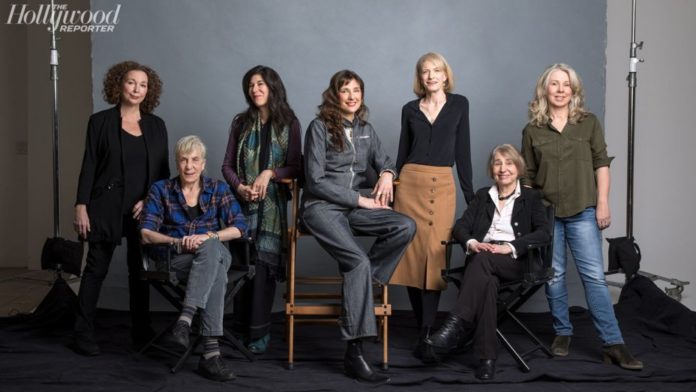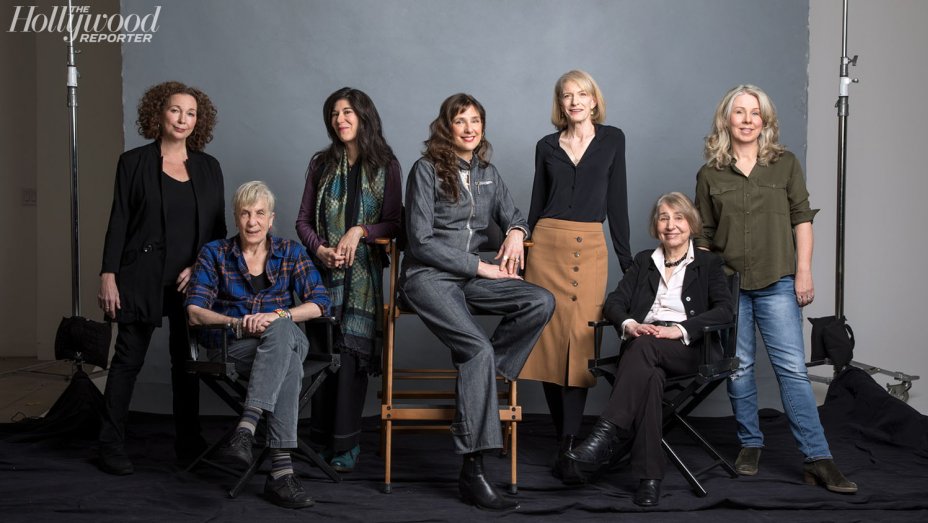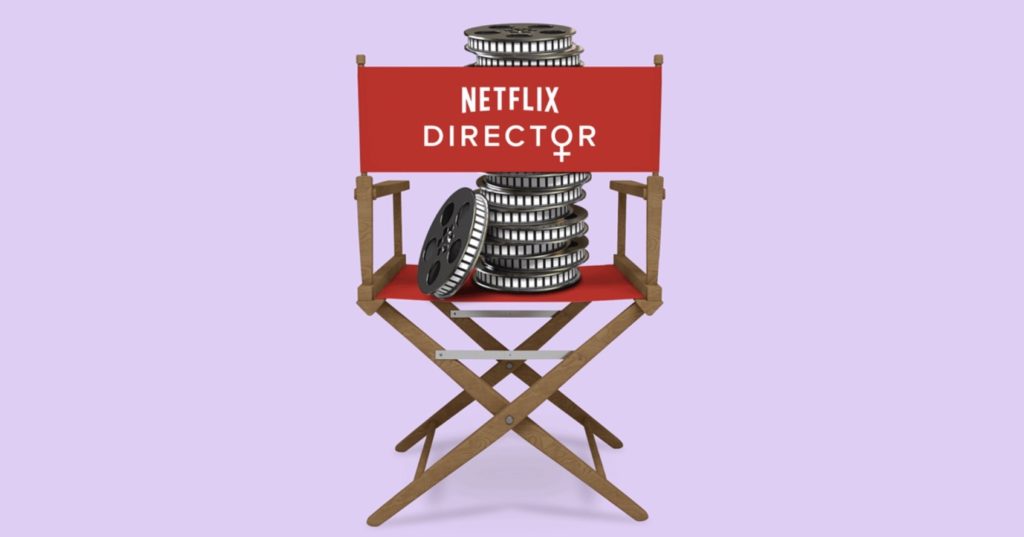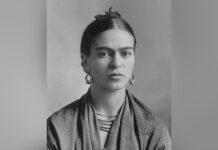
Nearly two years have gone by since the deplorable and chronic behavior of the former head of the Weinstein Corporation came to light, kicking open the floodgates that once hid the perverse chauvinism of Hollywood. As we listened to a seemingly eternal stream of horror stories and victims it appeared as if the pathologies of power have known no bound and that sexism and discrimination are endemic in the entertainment industry. Details surfaced, abuses of power, all of them men in director’s chairs, with producer credits, in lead roles, or with offices on the executive floors. The stories were so difficult but also so necessary to keep the momentum of change, especially considering how long ago it was (2004) that stories about the Pudding Pop king started knocking around, before dislodging any stones (2014).

These disturbing accounts of harassment, assault, rape, coercion, and career sabotage continue to be heard and predators continue to be exposed. There is nothing new about this narrative in which female actors are young and naive starlets at the mercy of exploitative and sadistic director, co-star or executive. Instead, it’s a trope rooted in the origins of the entertainment industry, that old Hollywood where young female actors were forced to gobble diet pills and pressured into using abortions as birth control.
How Did We Even Get Here?
The conditions that allowed the absurdly misogynistic atmosphere of Hollywood to take root required male studio heads. Naturally, the leaders of all “Big 5” studios were men, the vast majority of crew were men, the writers were men, the powerful producers and directors were exclusively men for a long time. Too many abused their power in systemic and secretive ways, which led to imitation or repetition. Powerful filmmakers subjected their leading ladies to unwanted advances and unsafe conditions on set. Sexual favors were expected, coerced, joked about and, when withheld, sufficient reason for the termination of a career.
If you’ve been sexually harassed or assaulted write ‘me too’ as a reply to this tweet. pic.twitter.com/k2oeCiUf9n
— Alyssa Milano (@Alyssa_Milano) October 15, 2017
It’s staggering to think that some of these practices have survived in their entirety so many decades later, that sexual violence and intimidation continues to play a role in the power dynamic of still-so-lopsided film industry. Other remnants of Hollywood’s ageist and sexist beginnings are less stark but no less insidious.
Even after having to avoid or survive “casting couch” moments, female actors have had to fight to receive equal billing for equal or bigger parts, equal pay, and even basic humane treatment on set. Recently, actor Michelle Williams discovered her male co-star earned one and a half million dollars to her $1,000 paid to her for the reshoot of a Ridley Scott movie from which he cut and recast Kevin Spacey’s role. Spacey’s own abuses of power had just been exposed and — get your best Alanis Morissette voice on — his male director decided to remove him at the literal expense of a female costar.
Revisiting Efforts to Improve the Playing Field
It is no surprise that after so many years in Hollywood, actor Geena Davis, known both for her badassery (in Thelma & Louise) and her intelligence (she’s a member of MENSA), created a foundation for the advancement of women in the entertainment industry. The foundation sponsors research, education, and outreach geared toward disclosing the gender iniquities in the industry and working toward much better inclusivity and representation.

Using a proprietary algorithm, the foundation has actually quantified the inequality between male and female actors in the quantity of screen time and dialogue they typically receive. Additionally the Davis’ foundation analyzed box office data to determine that films with more inclusive casts and crews end up doing better at the box office. Veteran actor Geena Davis is telling us, with math, that more women equals more money. If Hollywood refuses to hear that their own bottom line goes up when women are lifted up, it’s likely because the change should probably begin at the top.
It all reminds me of how shortly after college, a good friend of mine from decided to quit her job in publishing, which was a largely female enterprise at our office, and go to culinary school. After six months she graduated and took her first job as a prep cook with a male chef. A week later, she called me to say she had made a huge mistake, she could never work in commercial kitchen. Her colleagues treatment was rough and sexist, and she constantly felt like she was being hazed. Looking back on it now, in all likelihood, she was.
I commiserate with her and both mourned the seeming inevitability of the end of her career. It was a happy surprise when some time later she told me she would give it another go. This time, the chef and all of her staff were female. This new restaurant was also in NYC, also hip, also busy, and I’m quite sure no less stressful in the back. For my friend, though, it was manageable in a way the former had not given even a hint of becoming. “What’s the difference, where do you feel it?” Without hesitation she replied, “the chef. She never yells, she doesn’t humiliate. It all trickles down…”
In what I imagine to be a similar vein, a group of directors in Hollywood (some female, some allies) have issued a challenge to their colleagues through the #timesup platform. The 4% challenge is based on the idea that only “from 2007-2018 only 4% of the directors of 1200 top-grossing films were women,” and these directors are encouraging actors to sign onto feature film project with a female director within the next 18 months. So far, Universal Studios is rising to the challenge and if the box office reacts as it should with some of this big names attached, we’ll hopefully soon see more.
So is the challenge already working? Maybe. Certainly, the data that informs the 4% challenge (from a study conducted by the Inclusion Initiative), has definitely put the problem on the radar of the public and the various screen guilds and organizations. Looking back on the history of women filmmaker in Hollywood, it is easy to become discouraged. But looking at it also allows us now to realize that one of the reasons women are wonderful in the director’s chair is because they cast more women and other underrepresented groups, giving them meatier parts.
Sundance is Here to Change the Game
The Sundance Film Festival, for example, received the most racially and gender diverse submission pool ever this year, and they responded by devoting nearly half of the screening roster to films with at least one female filmmaker. Another 40 of this year’s films had directors of color and 15 directors who identify as LGBTQIA. All of these filmmakers tended to attract similarly diverse actors for their projects.

From left: Sundance grand jury prize winners Nancy Savoca, Jill Godmilow, Debra Granik, Rebecca Miller, Marisa Silver, Joyce Chopra and Courtney Hunt were photographed Jan. 15 at Milk Studios in New York. Not pictured: Karyn Kusama and Desiree Akhavan.
The news from Sundance is heartening because it’s the sign of things to come. As the prototypical vanguard festival, and we can already see some of the results of diversifying the white male director crowd. As anticipated, these female directors are bringing in a big breath of fresh air, like Lulu Wang’s auteur film starring Awkwafina, a film directed by Alma Har’el and a teenage tale about a Muslim girl with Minhal Baig directing young Geraldine Viswanathan.
Female filmmakers are also attracting some established heavy hitters from the big and small screens, such as multiple Oscar-winner Emma Thompson and the actor/director/producer powerhouse (and Oprah’s buddy) Mindy Kaling. These ladies are reinvesting their girl power into female-led projects. Other female filmmakers, actors, and writers with mentor-like qualities — Amy Poehler, Lena Waithe, producer Nina Jacobson — are both inspirational and aspirational.
This is exciting news to read in Vanity Fair, the same industry standard publication that Ronan Farrow used to give a “time’s up” to quite a few Hollywood bigwigs. When the mighty fall, the force is enough to cause tectonic shifts. There has definitely been a shift: this year, all four of the Sundance director’s awards went to women. Last year, the measly 31% of female-directed films hit the screen in Park City at roughly the same time as the details of Weinstein’s heinousness aired, and women, engulfed in our epic rage, took to the snowy hills in protest.
It’s a shift, but it’s slow yet. Compare the spotlight that Sundance is shining on the abundant female talent this year to the stark lack of representation amongst the all-male Oscar nominee list for Best Director to understand we still need to do better. Despite adding 900 new members in an effort to increase diversity in its voting roster, the Academy of Motion Pictures’ nominees does not reflect that rainbow.
Yes, nominations of black filmmakers and actors did go up this year. This effect, after years of prioritizing the inclusion of filmmakers of color, serves as comfort that change is possible. But even when we look at the progress we have made recognizing filmmakers of colors, women are as absent from that list as they have been, historically, from categories that aren’t specifically female. Best Director, for example, has only ever seen 5 female nominees and a single winner in almost a century. That lone winner was Kathryn Bigelow for Hurt Locker. In her acceptance speech, Bigelow naturally spoke about being the first woman to win and wished to be only the first of many. That was 10 years ago. Women of color haven’t gotten one award: they are the rarest recipients of the credit they deserve, even at Sundance and where a distinct effort was made toward gender equality.
The New Force is Hollywood is Not Done Shifting the Conversation
Aware that gains have been made in giving the floor to women filmmakers and to filmmakers of color, but that the middle oval of the Venn diagram is staggeringly insufficient, Sundance is looking the problem in the face. A panel headed up by trailblazer Lena Waithe will examine the obstacles that women of color face in an industry that is still struggling to move away from its sexist, exclusionary ways.
Another source for positive change in the industry has been the implosion of the old-school Hollywood behemoth studio in favor of the thriving world of Netflix and Hulu-produced films. These streaming services have spend the last few years perfecting the art of putting out original films and “miniseries”-length projects with super high production value. Series then feel more like an episodic film than television, they are often current or trending in topic, and they can be binged watched, making them an ideal delivery method for home viewing.

Female filmmakers have found a new kind of home on these platforms, directing 27% of all original films on Netflix (versus 12% of other films in 2017) and an impressive 40% of original documentaries. As these films and series continue to gain popularity, their methodology will hopefully seep into big studio films, too.
This year, the Oscar ceremony celebrates its 91st anniversary. It would be nice to see these industry shifts settle within the next decade, better inclusivity and even more films directed by women, so Oscar can celebrate a full century in the company of many more diverse friends. To paraphrase Waithe, who one of the most powerful beacons for this change, different types of storytellers are necessary to tell different kinds of stories. The public is hungry for different stories. Otherwise, I suppose we’ll be watching remake after remake, from here to eternity.
For Image credit or remove please email for immediate removal - info@belatina.com



































